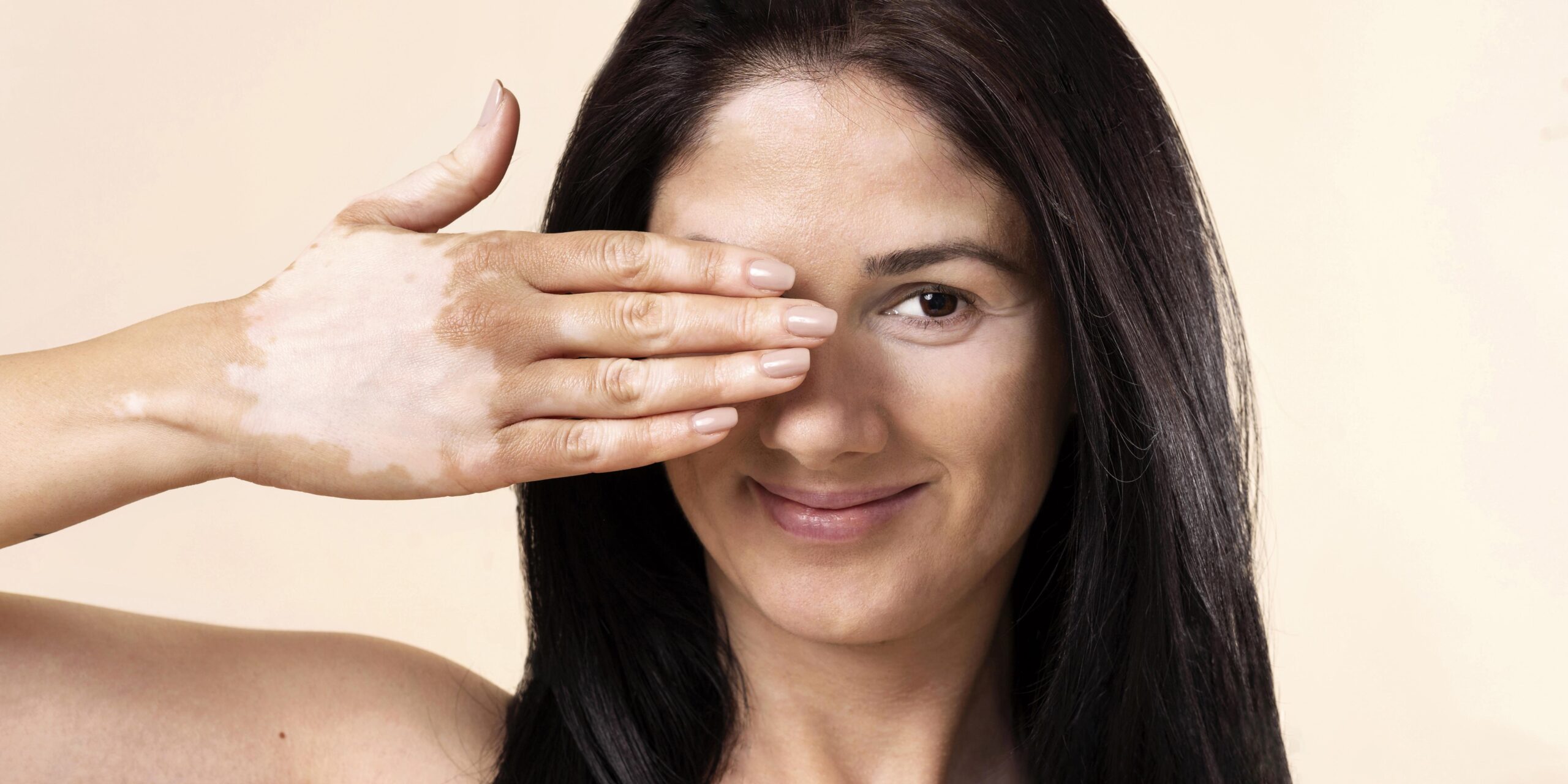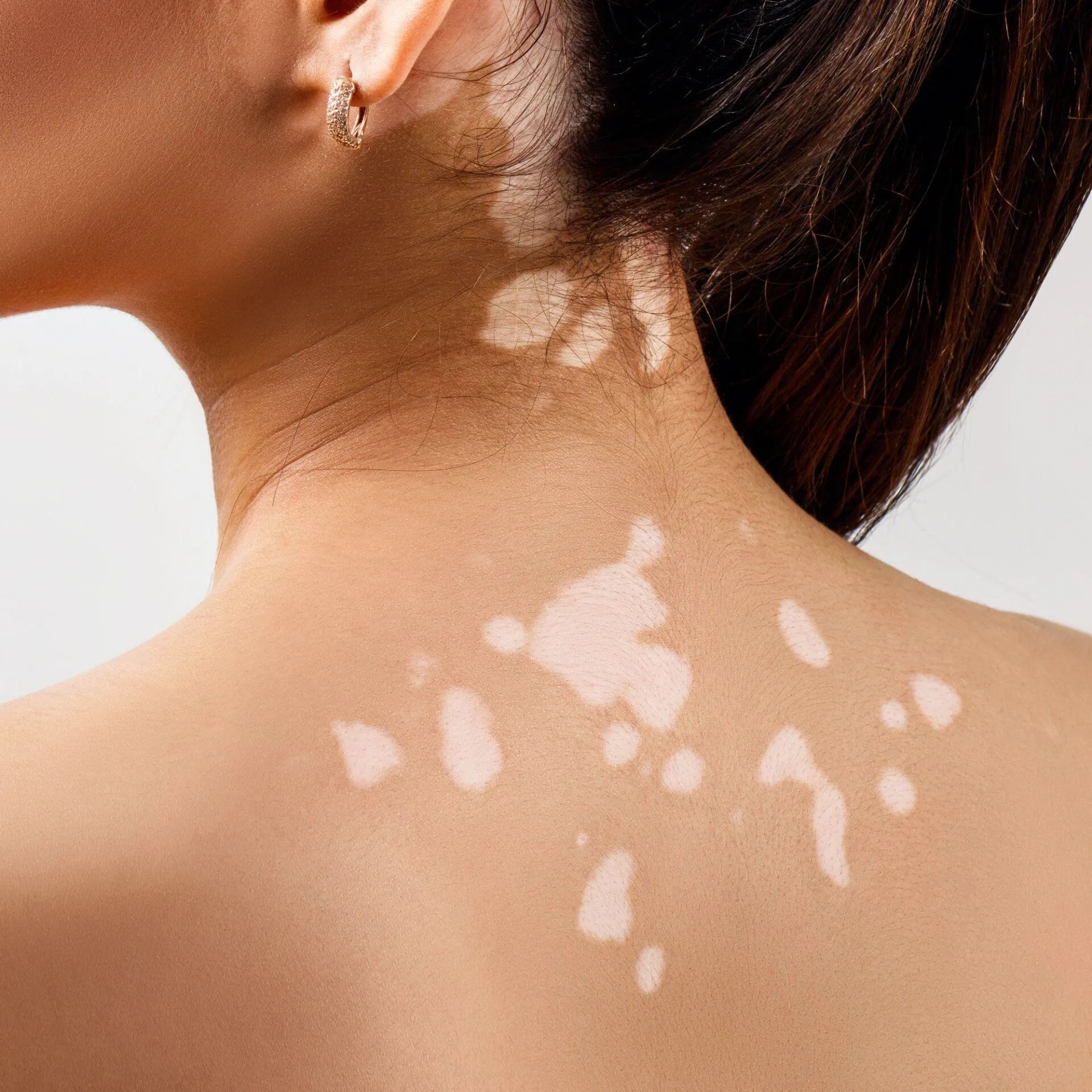

Vitiligo is a chronic skin condition where patches of skin lose their natural color, resulting in white or light-colored areas. These patches can appear anywhere on the body and are most noticeable in people with darker skin tones. Vitiligo is not contagious or life-threatening, but it can affect self-esteem and emotional well-being. Understanding vitiligo is the first step toward effective management and improved quality of life.
The exact cause of vitiligo is not fully understood, but it is believed to be an autoimmune disorder. In this condition, the body’s immune system mistakenly attacks the pigment-producing cells called melanocytes. Genetic factors and environmental triggers such as stress, sunburn, or chemical exposure can also play a role. Sometimes, vitiligo is linked to other autoimmune diseases such as thyroid disorders.
Vitiligo is classified into several types, based on the pattern and distribution of the white patches:
| Type | Description |
|---|---|
| Non-segmental | The most common type. Symmetrical patches appear on both sides of the body (e.g., hands, face). |
| Segmental | Patches appear on one side or area of the body, often in a linear or band-like pattern. More common in children. |
| Mixed | Features of both segmental and non-segmental vitiligo. |
| Unclassified | Patterns that do not fit into the above categories. |
Non-segmental vitiligo accounts for over 90% of adult cases, whereas segmental is more common in children.
Common symptoms of vitiligo include:
Most patches are symptom-free and do not cause physical discomfort.
Diagnosing vitiligo is usually straightforward. A dermatologist examines the skin and reviews the patient’s medical history. Sometimes, a special ultraviolet light called a Wood’s lamp is used to highlight depigmented patches. In rare cases, a skin biopsy or blood tests may be needed to rule out other conditions. Early diagnosis helps in starting treatment and managing the condition more effectively.
While there is no cure for vitiligo, several treatments can help manage symptoms and restore skin color:
In addition to these treatments, many people seek natural and supportive options to complement their care.
Many individuals with vitiligo look for gentle, natural products to support their skin health. Vitiligo oil, formulated with carefully selected herbal ingredients, has become a popular choice. Dermatologists are increasingly recommending vitiligo oil for its ability to support skin health and gently encourage pigment restoration. This natural approach fits well into daily skincare routines and can be used alongside other treatments.
Vitiligo oil works by improving local circulation to the affected skin, helping oxygen and nutrients reach the area more efficiently. Key ingredients like Psoralea corylifolia (Bakuchi oil) and Wrightia tinctoria are known for their melanocyte-activating properties. Combined with moisturizing carrier oils, vitiligo oil soothes, protects, and nourishes the skin, supporting long-term skin health and resilience.
One of the main advantages of vitiligo oil is its safety profile, making it suitable for long-term use and for people with sensitive skin. Unlike some conventional treatments that may contain steroids or harsh chemicals, well-formulated vitiligo oil is typically steroid-free and gentle. This makes it an appealing option for children and individuals seeking maintenance care without the risk of significant side effects.
Research on vitiligo oil is still emerging, but early studies and clinical experiences are promising:
To use vitiligo oil effectively, follow these steps:
Many dermatologists advise applying vitiligo oil at night to allow it to work uninterrupted while the skin regenerates.
Patient experiences with vitiligo oil are generally positive:
The safety, ease of use, and natural formulation of vitiligo oil make it a popular choice among those looking for a proactive and gentle approach to managing vitiligo.
Living with vitiligo can be challenging, but there are many ways to support your skin and emotional well-being:
Current research into vitiligo is rapidly evolving, with new insights into its causes and potential treatments:
No, vitiligo is not contagious. You cannot catch vitiligo from someone else through skin contact or any other means. Understanding this helps reduce stigma and supports better social acceptance for people with vitiligo.
Currently, there is no cure for vitiligo, but treatments can help manage symptoms and restore skin color in many cases. With a range of options available, including topical treatments, phototherapy, and supportive therapies like vitiligo oil, managing vitiligo is more achievable than ever before.
Anyone can develop vitiligo, but it is more common in people with a family history of the condition or other autoimmune diseases. Environmental factors like stress or sunburn can also increase the risk. Understanding your risk factors can help you take proactive steps to care for your skin and overall health.
If you have vitiligo, consult a dermatologist for personalized advice and treatment options. Protect your skin from the sun and consider using gentle, supportive products like vitiligo oil. Seek emotional support if needed and stay informed about new research and treatments. With the right care and support, you can manage vitiligo and maintain a good quality of life.
Vitiligo is a manageable skin condition with a growing number of treatment and support options. By understanding its causes, symptoms, and available treatments, you can take proactive steps to care for your skin and well-being. Vitiligo oil, with its natural ingredients and gentle approach, offers a safe and supportive addition to any vitiligo management plan. Stay informed, seek support, and consult a dermatologist for the best possible outcomes.
100% Original product that covered warranty by the vendor.
You have the right to return your orders within 15 days.
Your orders are shipped seamlessly between Canada & USA
Your payments are secure with our private security network.

We noticed you're visiting from Canada. We've updated our prices to Canadian dollar for your shopping convenience. Use United States (US) dollar instead. Dismiss
1 thought on “What is Vitiligo? A Complete Beginner’s Guide”
This article provides a clear and informative overview of vitiligo, explaining its causes, types, and potential treatments. I appreciate the emphasis on understanding the condition and the available options for managing it. Thank you for sharing this valuable information!